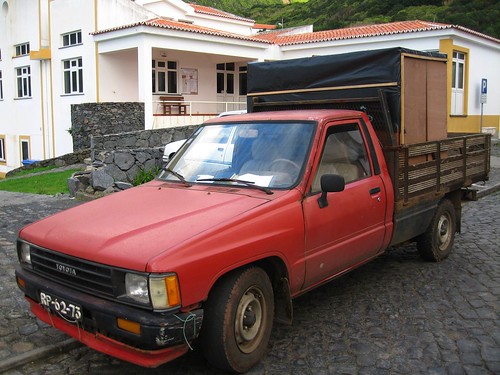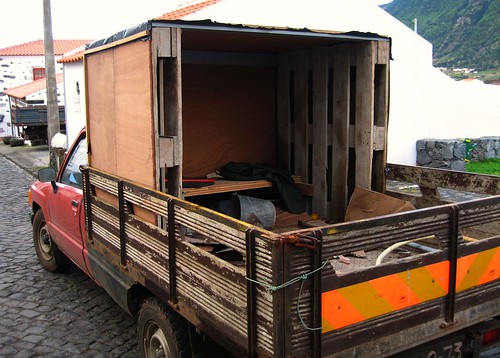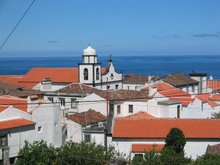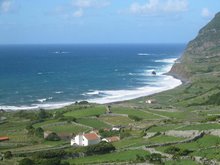As my scanner's on the blink that's a photo of the logo for the event which is an outline map of the island with the foreign flags plonked roughly where the corresponding ex-pats live on the island. You'll note a Union Jack at about 9 o' clock approximately over Faja Grande where we stay. We're the only Brits on the island so the Grand Vizier of the Perola do Ocidente ("Pearl of the West") lodge of the Lions Clube (Porto. equivalent of Rotary or Round Table) - the organisers of the event - knows where we live.
So resistance being useless, we agreed to go in accordance with the following strategy: PL's driving so we'll deal with it by getting drunk - a bit of a flash of genius on my part, I think you'll agree.
The next problem we - by which I mean Carol - was faced with was that everyone was expected to bring along a dish or a drink from their homeland. I was all in favour of just getting a bottle of Scotch from José António's. As it's so much cheaper here, we could even run to one in a presentation box. But C felt more effort was required although with ingredients for haggis being thin on the ground, what to do? Until she came up with the brilliant of idea of oatcakes. (Which would not have been thought of were it not for the fun which ensued from when a friend of ours - you know who you are - was out here last year and said in JA's shop "Oh look, oatmeal, let's make oatcakes!")
So, posh bottle of Scotch and tupperware full of oatcakes (triangular this time instead of round if you're reading this oatcake friend) in hand, we mounted up on PL's 4WD (for the last time as events would turn out). A fellow passenger was Tino, a Finnish chap who lives in FG (Finnish flag duly represented on map above at quarter past nine) who'd gone to the trouble of making some sort of Finnish dish although its name escapes me now.
Anyway, on arrival at the village hall at Lajes, I'd expected to find about a couple of dozen of the mainly German expats who live here but was surprised to find half the island had turned out:-


The lady on the left is French (she had earlier done a routine with her very young kids) and the lady on the right is Brazilian and they did a very clever routine whereby you thought it was going to be cringingly awful until they brought it up by degrees to being a Susan Boyle moment.

These two above were a chap from Cape Verde (I'm sorry I don't know your name) and his daughter (ditto) who brought the house down. Cape Verde is a country almost no English speakers have heard of. It's an archipelago of islands off the coast of West Africa colonised by Portugal but, with an overwhelmingly African population, they've been an independent republic since 1975. CV is to Portugal what Jamaica is to the UK.
The bottle of posh Scotch went down a storm (and the oatcakes disappeared without trace so we're taking that as no news is good news) so I'm brushing up my High Roads and my Low Roads for next year.





















 Note the exquiste coach work hand crafted from pallets and plastic sheeting.
Note the exquiste coach work hand crafted from pallets and plastic sheeting.






